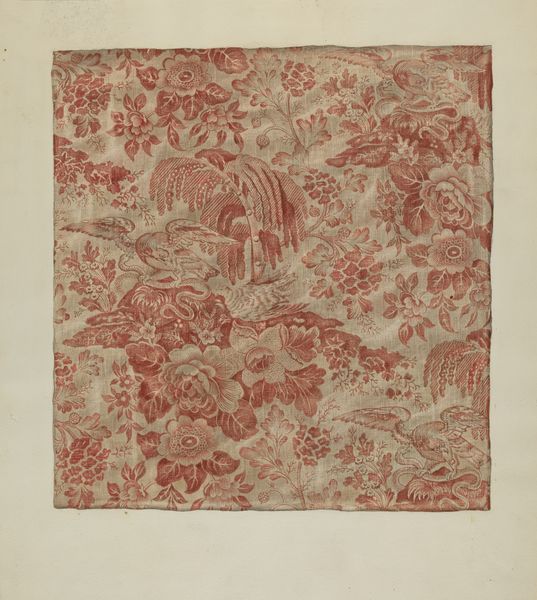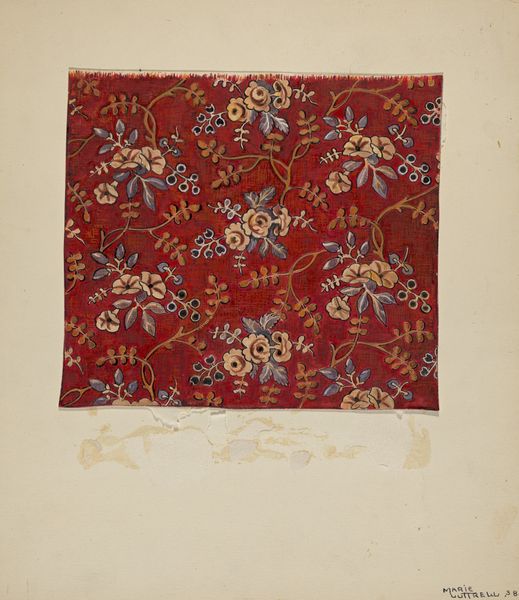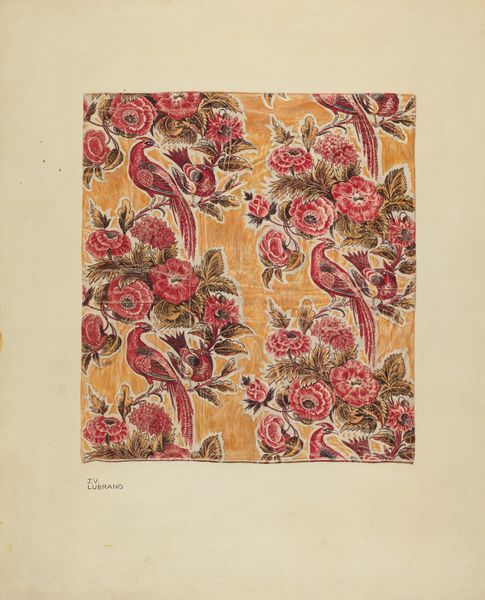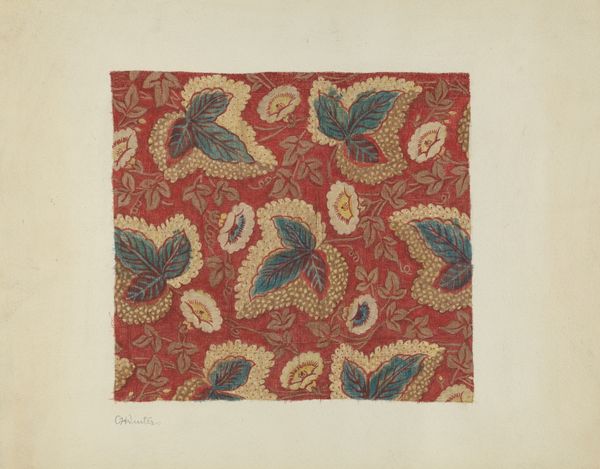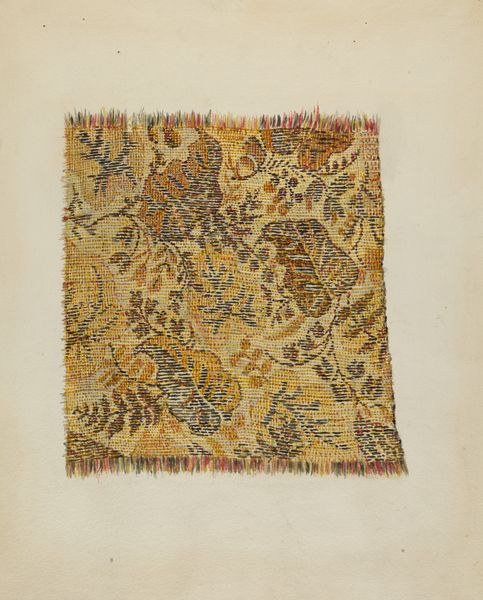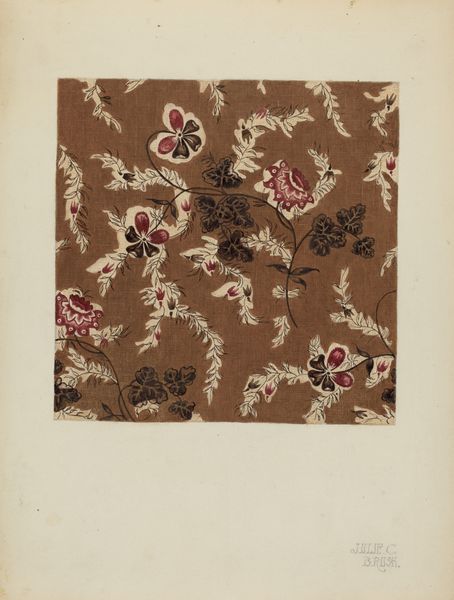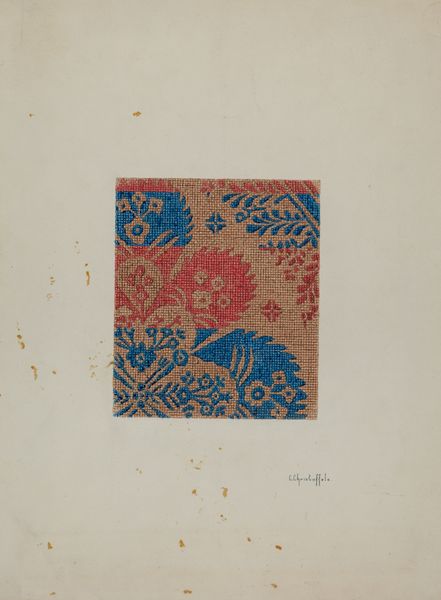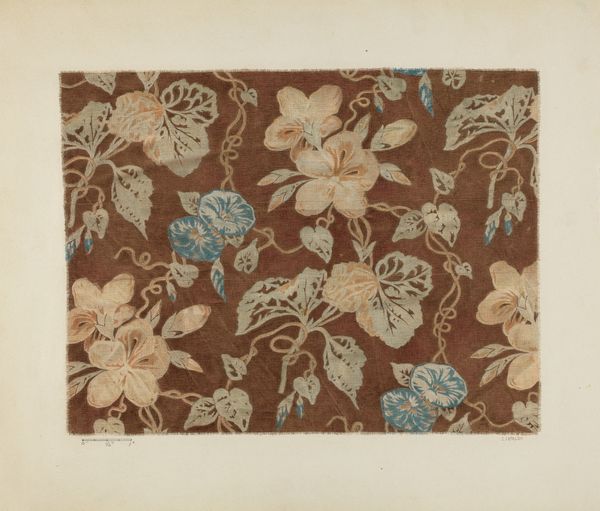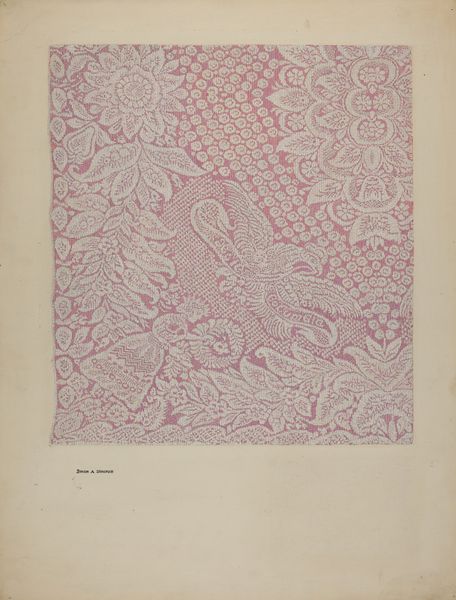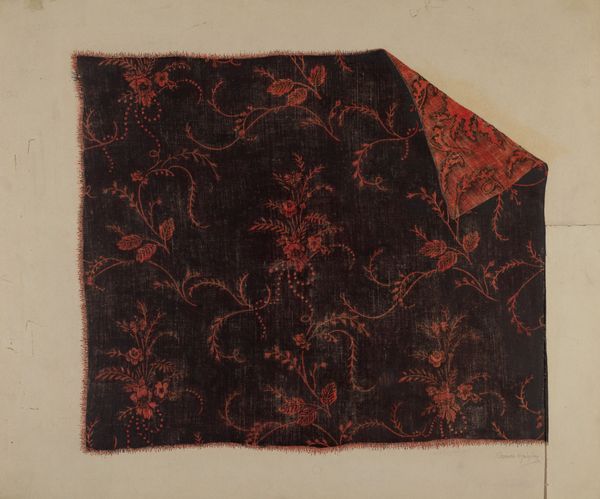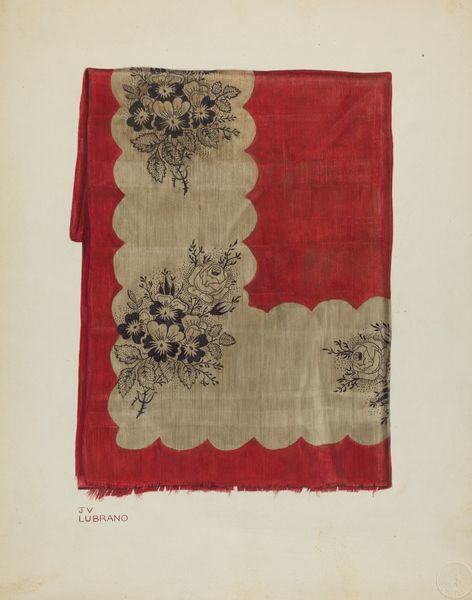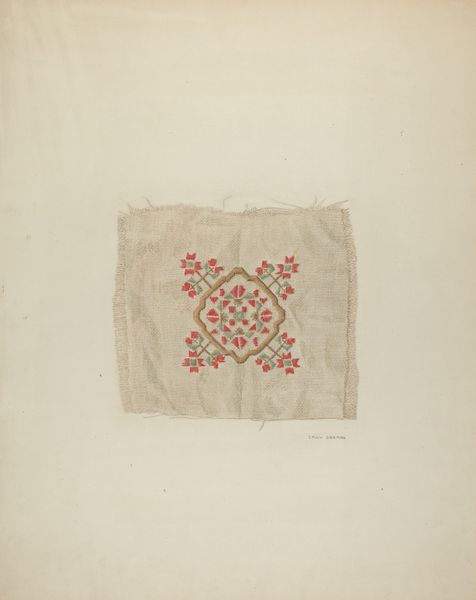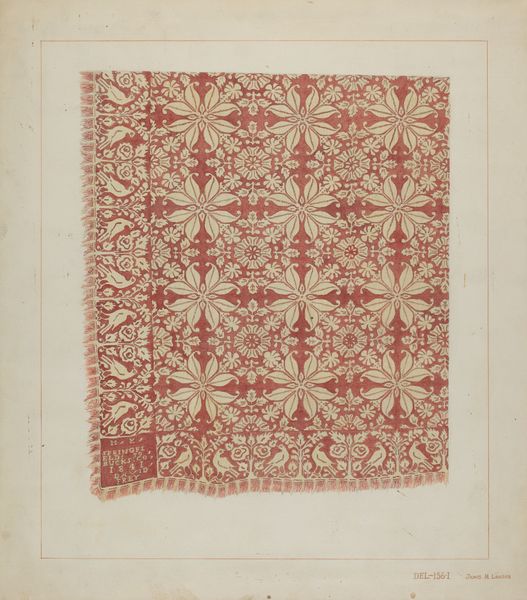
drawing, mixed-media, textile, pencil
#
drawing
#
mixed-media
#
pattern
#
textile
#
coloured pencil
#
pencil
#
decorative-art
Dimensions: overall: 35.5 x 31.7 cm (14 x 12 1/2 in.) Original IAD Object: 36" wide
Copyright: National Gallery of Art: CC0 1.0
Curator: This is a mixed-media drawing entitled "Ingrain Carpet" dating from around 1936, attributed to Jules Lefevere. It gives us insight into decorative arts of the period. Editor: The textures jump out! It has a depth and handmade quality that contrasts so much with our mass-produced fabrics today. The way the colors interact— the reds and creams—suggest a well-worn, loved object. Curator: It evokes the concept of 'home' but also reveals our shifting definitions of what is tasteful, refined, or even desirable across generations. These floral patterns held quite a bit of cultural capital at one time. What sort of emotions come to the surface when you look at such symbolism? Editor: I see not just floral patterns, but evidence of process. Consider the human effort embodied here: growing flax or cotton, spinning it into thread, carefully weaving the fabric on a loom, then dying it… there are countless hours embedded in this small textile sample. The slight imperfections also speak to handcraft traditions. Curator: True, but I think these flower motifs signify something deeper. Flowers, across many cultures, represent fragility, beauty, fleeting life. Combined in the domestic space they are powerful reminders of life’s cyclical nature – births, deaths, celebrations, and mournings all within the walls of home. This specific flower selection, their density—these all contribute to how someone would interpret their place in society. Editor: I'm less focused on the flowers' metaphorical power and more on their place within the wider ecosystem of production and consumption. It represents not just domestic ideals, but economic forces; from the plantation workers who grew raw materials, to factory laborers who wove the fibers, up to the consumer… It is all connected, literally woven together in the tapestry before us. Curator: It does remind us to value the lineage of everyday objects. How tastes, social status and value judgments leave traces in these objects we live with. Editor: Yes! It grounds the abstract concept of 'home' in the real world. In a world filled with synthetic copies it reminds me of how objects once reflected a connection to place, material and labor.
Comments
No comments
Be the first to comment and join the conversation on the ultimate creative platform.
